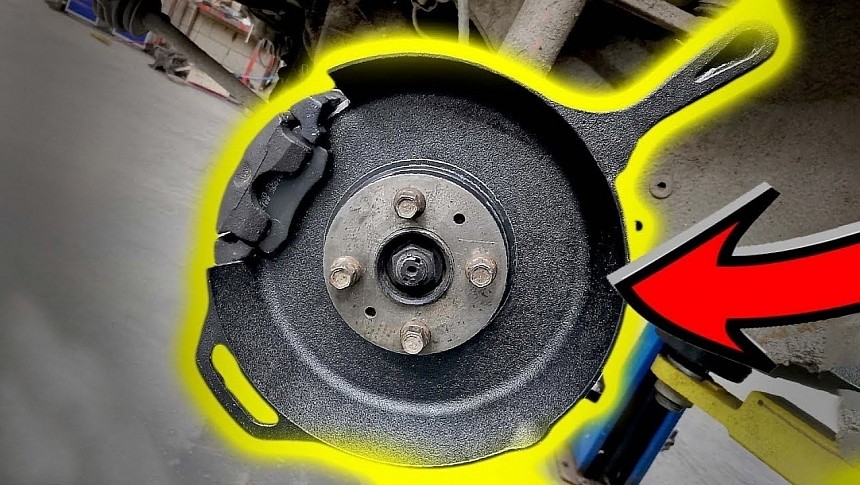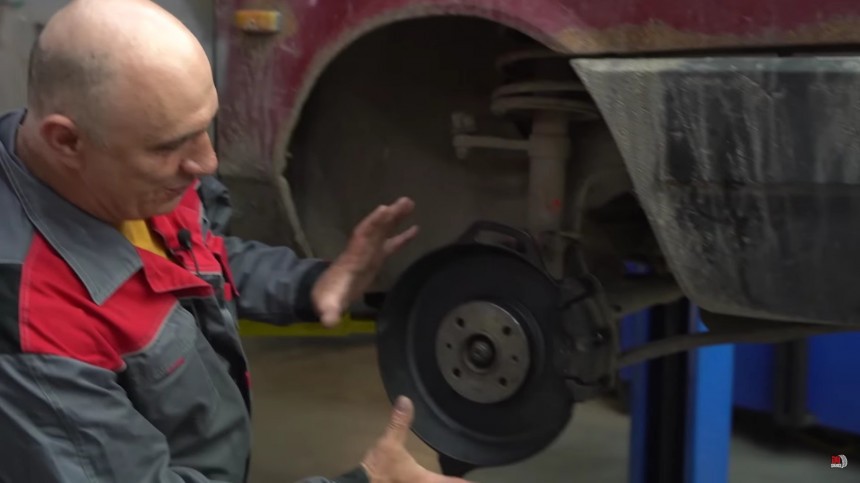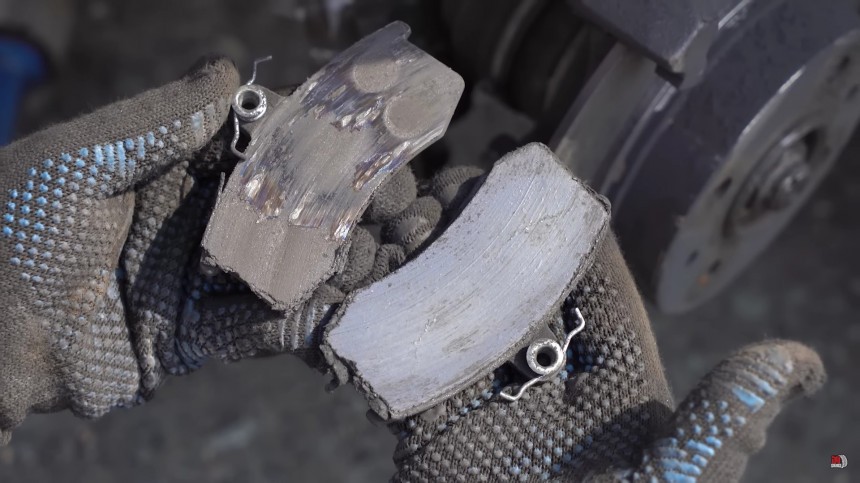Ever heard the expression, “My brakes are fried?” A lively bunch of motorheads from Siberia took it literally and built a set of disc brakes out of cast iron for experimental purposes. The results were… well done, to say the very least. The PUN only makes sense if you take a closer look at the original material for the makeshift brakes – a pair of frying pans.
Cast iron is no stranger to the automotive industry – it has been used for engine blocks and shafts (crank, cam, or drive) since the dawn of the piston age. The iron-carbon alloy is tough, can be machined with precision, and ages exceptionally well. On the downside, it is prone to rust; it’s almost non-malleable and relatively heavy.
Humans have used the material in various applications, and cookware is the most widespread and commonly found. After all, when searing a nice, juicy T-bone, the best way is to take grandma’s trusted Lodge skillet and finish the steak to perfection.
Being such a versatile material made it perfect for numerous other industries. Still, until now, there hasn’t been an attempt to make car-stopping devices from repurposed cookware. Leave it to the Garage 54 gang to figure that out – or, at least, have a go at the unconventional engineering approach.
The test mule is an old Lada Samara – a car that has endured numerous antics of the Russian wrench-turning mob – and its regular front disc brakes have been modified. After precision-lathing the two 11.5-inch (30 cm) sacrifice skillets to the correct shape and size of a brake rotor, the car was sent out to the test track on the outskirts of Novosibirsk, south of Central Siberia.
The test failed spectacularly – the right wheel brake assembly was utterly pulverized during the few runs at no more than 50 mph (80 kph). The magnificent ability of cast iron to retain heat is fantastic for giving that delicious ribeye a perfect crust; car brakes, on the other hand, need to dissipate heat as quickly as possible (lest the fluid boils over).
What exactly happened to the kitchen-derived brakes is a question for enlightened mechanics – or rather, why the skillet bottoms are appalling at stopping cars – but a brake piston fell clean off its caliper. As for the pads, they were shaven to bare metal by the intense friction against the improvised rotors.
It could be that the skillet isn’t as thick as a regular and road-legal brake disc, so the pads didn’t get a good grip on the thin rotor. That theory holds water when looking at the final part of the video, with the Lada up on a jack, with the rotor spinning wildly under throttle while the brake pedal is also down. As you can see, the other front wheel is also turning, despite being on the ground.
By the way, don’t try this. Not at home, not in a confined space, just don’t. The guys at Garage 54 are hard-core professional Russians; rest-of-the-world rules have no power other there. Consider the complete sequence of events: the first drive concludes with “I have no brakes,” which is a perfectly Russian-reasonable incentive to repeat the test at a higher speed. Frankly, it’s downright miraculous that they emerge unscathed from their experiments (some of which are potentially threatening to physical integrity).
The Siberian dare-physics fitted their battered junkyard-worthy Lada with new brake pads to test the cast iron alternative. Alas, the abrasive, rough surface of the discs ate right through the friction layer, and the car rubbed two iron-carbon alloys (cast iron and steel) against each other.
The forces exerted during braking were so intense that one of the pads flew clean off out of its caliper and ended up on the concrete track. It could be the unpolished finish of the skillet that violently sandpapered the Russians’ ingenuity off the future of motoring.
Humans have used the material in various applications, and cookware is the most widespread and commonly found. After all, when searing a nice, juicy T-bone, the best way is to take grandma’s trusted Lodge skillet and finish the steak to perfection.
Being such a versatile material made it perfect for numerous other industries. Still, until now, there hasn’t been an attempt to make car-stopping devices from repurposed cookware. Leave it to the Garage 54 gang to figure that out – or, at least, have a go at the unconventional engineering approach.
The test failed spectacularly – the right wheel brake assembly was utterly pulverized during the few runs at no more than 50 mph (80 kph). The magnificent ability of cast iron to retain heat is fantastic for giving that delicious ribeye a perfect crust; car brakes, on the other hand, need to dissipate heat as quickly as possible (lest the fluid boils over).
What exactly happened to the kitchen-derived brakes is a question for enlightened mechanics – or rather, why the skillet bottoms are appalling at stopping cars – but a brake piston fell clean off its caliper. As for the pads, they were shaven to bare metal by the intense friction against the improvised rotors.
By the way, don’t try this. Not at home, not in a confined space, just don’t. The guys at Garage 54 are hard-core professional Russians; rest-of-the-world rules have no power other there. Consider the complete sequence of events: the first drive concludes with “I have no brakes,” which is a perfectly Russian-reasonable incentive to repeat the test at a higher speed. Frankly, it’s downright miraculous that they emerge unscathed from their experiments (some of which are potentially threatening to physical integrity).
The Siberian dare-physics fitted their battered junkyard-worthy Lada with new brake pads to test the cast iron alternative. Alas, the abrasive, rough surface of the discs ate right through the friction layer, and the car rubbed two iron-carbon alloys (cast iron and steel) against each other.
The forces exerted during braking were so intense that one of the pads flew clean off out of its caliper and ended up on the concrete track. It could be the unpolished finish of the skillet that violently sandpapered the Russians’ ingenuity off the future of motoring.



















